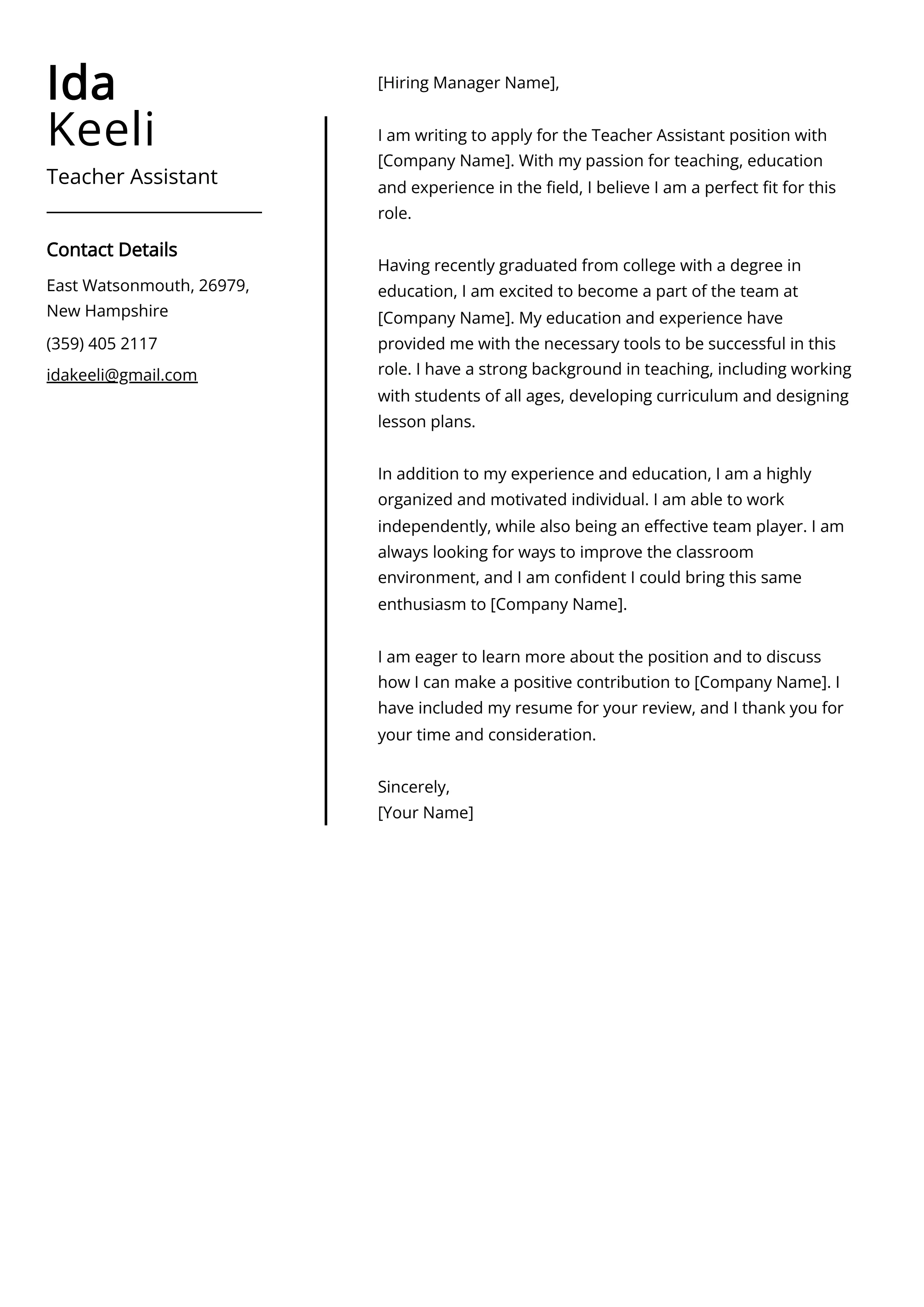What is a Teaching Assistant Cover Letter
A teaching assistant cover letter is a crucial document that accompanies your resume when applying for a teaching assistant position. It serves as your introduction to the hiring committee, allowing you to showcase your skills, experience, and enthusiasm for the role. Unlike your resume, which provides a factual overview of your qualifications, your cover letter offers a chance to express your personality, explain why you’re a great fit, and demonstrate your understanding of the position and the institution. A well-crafted cover letter can significantly increase your chances of getting an interview, as it provides a context for your qualifications and highlights your unique value proposition. It’s your opportunity to make a positive first impression and set yourself apart from other applicants, emphasizing what makes you the ideal candidate for the teaching assistant role.
Key Components of a Cover Letter
Contact Information
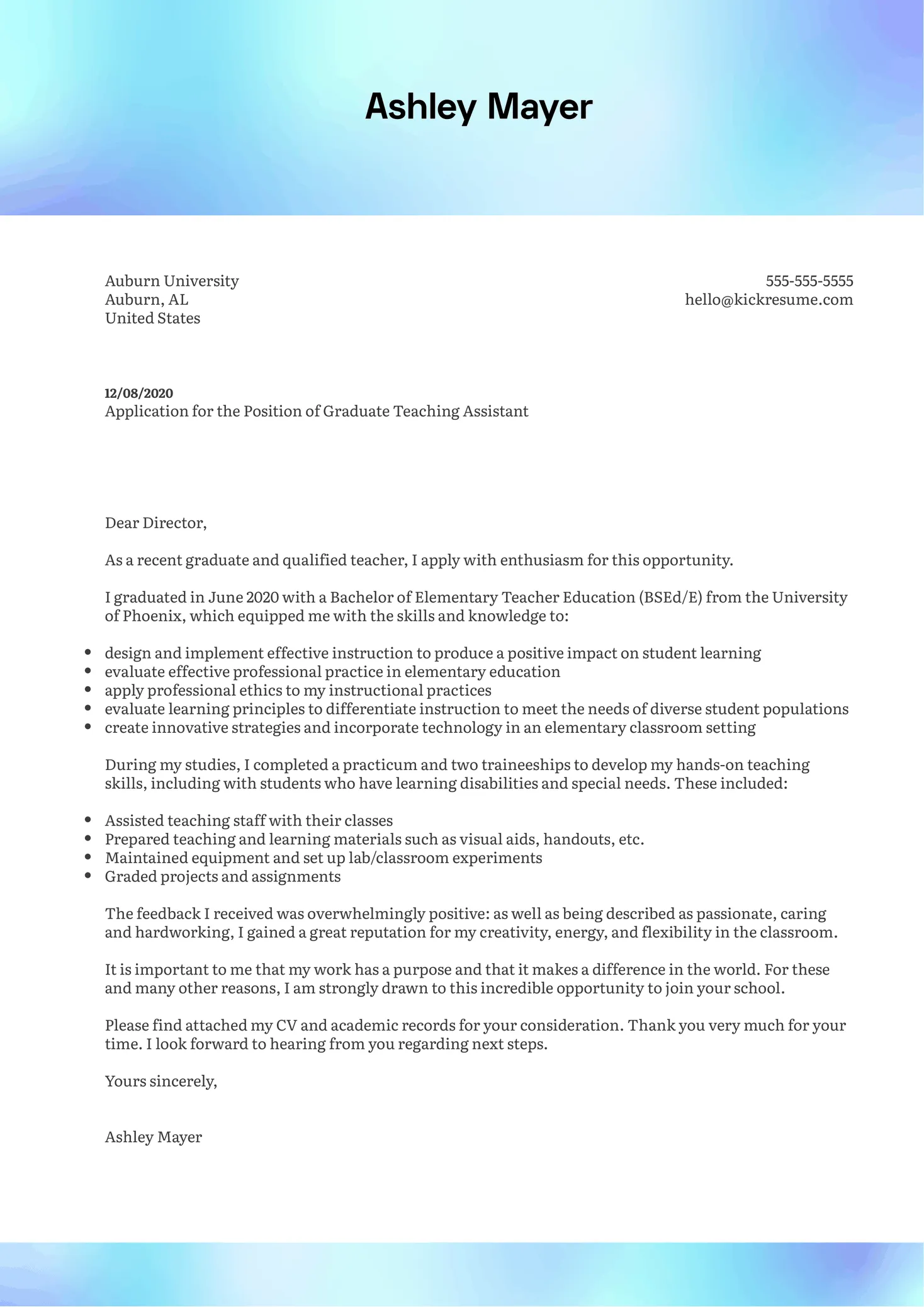
Your contact information should be at the top of your cover letter. Include your full name, address, phone number, and email address. This ensures that the hiring manager can easily reach you. Make sure your email address is professional and appropriate for job applications. This section should be clear, concise, and easy to read. Ensure that all the information provided is accurate and up-to-date. Double-check the spelling and formatting to maintain a professional appearance. This part sets the stage for a polished and organized application.
Introduction
The introduction is your first chance to capture the reader’s attention. Start by stating the position you are applying for and where you found the job posting. Briefly mention your enthusiasm for the role and the institution. If you have a personal connection to the university or department, feel free to include it. Keep the introduction concise, aiming to create an immediate positive impression. Your goal is to pique the hiring manager’s interest and encourage them to read further. Highlight your key strengths or a notable achievement that aligns with the job requirements. This will set the tone for the rest of your cover letter.
Body Paragraphs
The body paragraphs are the core of your cover letter. This section allows you to provide detailed information about your qualifications, skills, and experience. It’s the place to connect your abilities to the specific requirements listed in the job description. Explain how your background aligns with the role and what you can bring to the position. Use specific examples to illustrate your accomplishments. Quantify your achievements whenever possible to demonstrate your impact. Focus on the most relevant skills and experiences to showcase how you can contribute to the institution’s mission and goals. Tailor these paragraphs to match the specific needs of the department or university.
Highlighting Skills and Experience
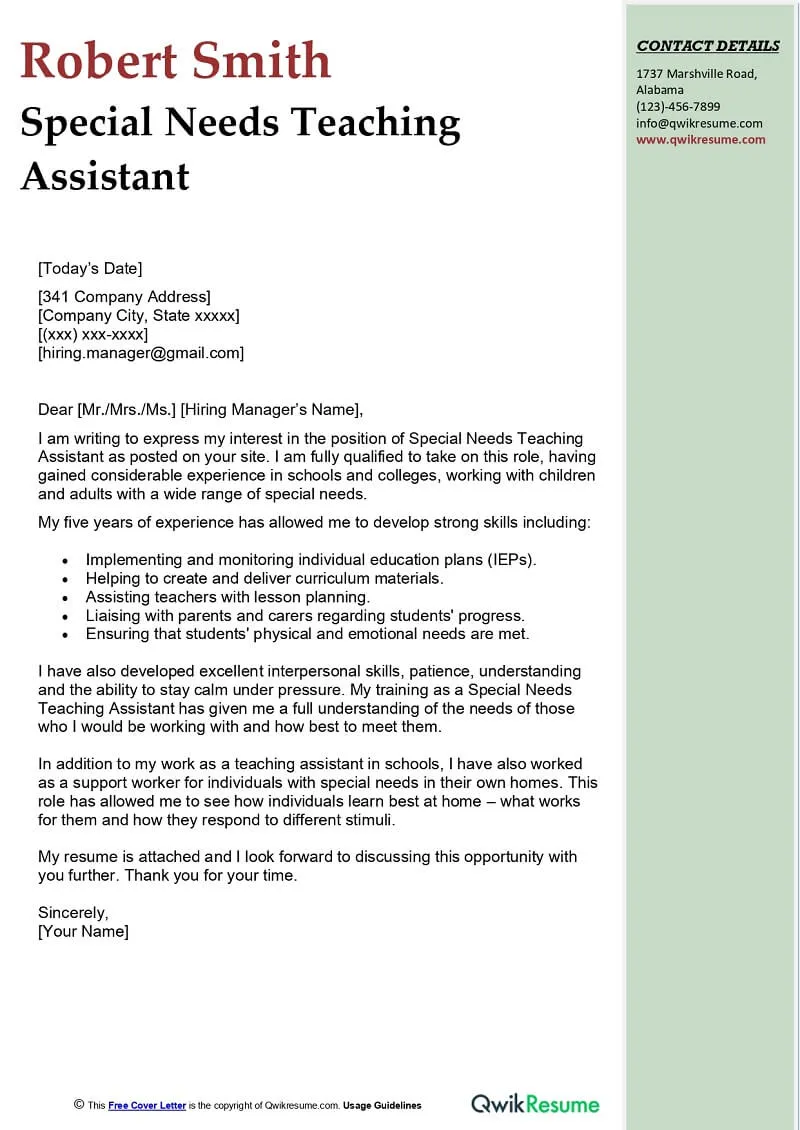
In this part, focus on the skills and experiences that make you a suitable candidate. Refer directly to the job description and highlight how your skills match the requirements. These skills may include communication, organization, classroom management, or subject matter expertise. Use action verbs to describe your accomplishments. For example, instead of saying ‘I assisted students,’ write ‘I provided individualized support to students struggling with specific concepts, leading to a 15% improvement in test scores.’ Show how you’ve used your skills to achieve positive outcomes. Provide details on your past experiences as a teaching assistant, tutor, or related positions. This helps the hiring manager understand your capabilities.
Quantifying Achievements
Quantifying your achievements makes your cover letter more impactful. Instead of stating you are a good teacher, provide concrete numbers and data. Mention the number of students you’ve worked with, the percentage of improvement in their grades, or the specific results you’ve achieved through your teaching methods. Use data to showcase your impact. If you improved student engagement or reduced classroom disruptions, quantify these achievements. Quantifiable achievements provide concrete evidence of your capabilities. This will demonstrate your ability to create a positive impact.
Addressing the Specific Job Requirements
Carefully review the job description and tailor your cover letter to address each of the requirements. Demonstrate that you have the necessary skills, experience, and qualifications. Give examples that directly address what the employer is looking for. If the job description mentions specific software or teaching methods, highlight your experience with them. Research the institution and mention any programs, initiatives, or values that align with your own. Showing that you understand the role’s specific demands will make you a standout candidate and increase your chances of securing an interview. This demonstrates that you are a well-informed and thoughtful applicant.
Closing and Call to Action
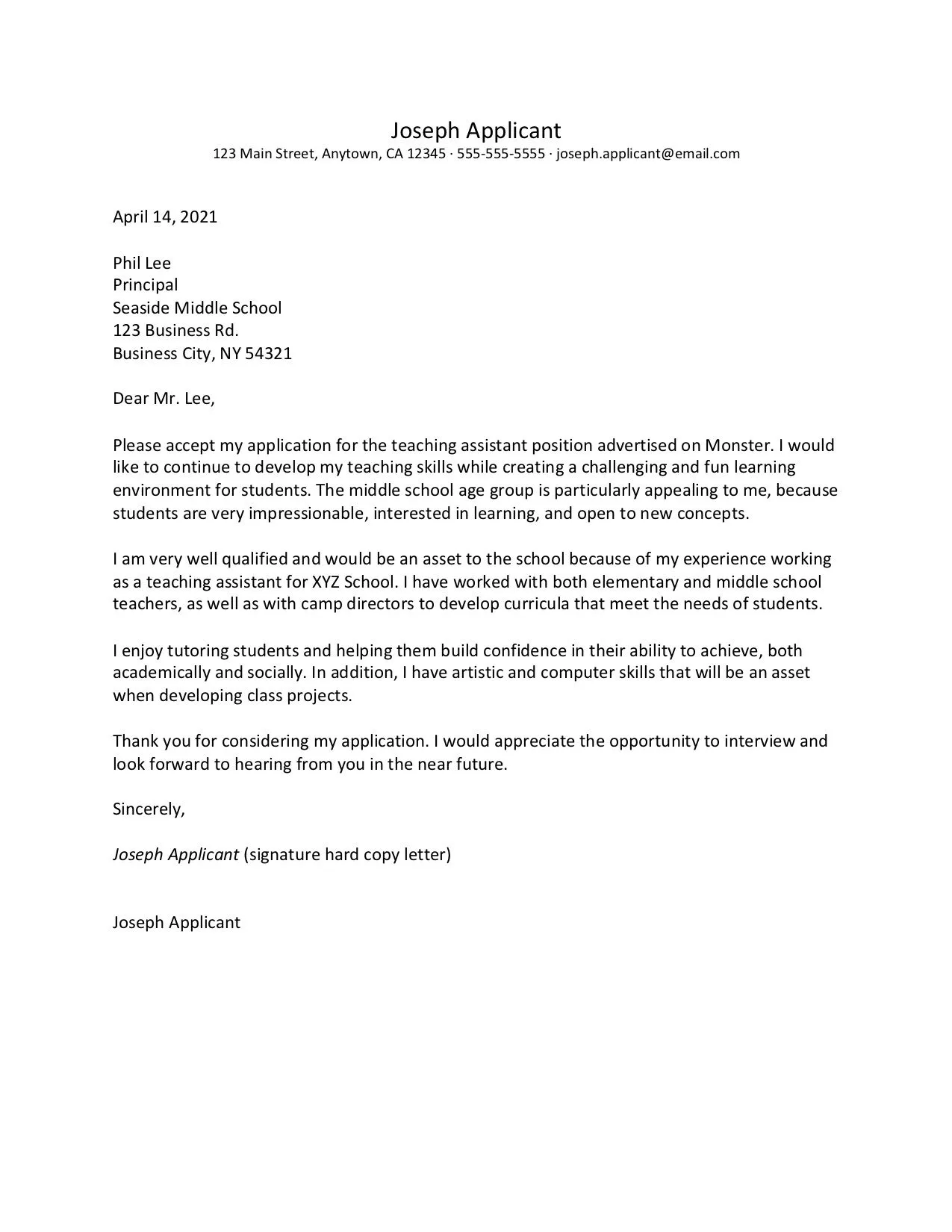
The closing paragraph should summarize your interest in the position and reiterate your qualifications. Thank the hiring manager for their time and consideration. Express your enthusiasm and desire for an interview. Include a clear call to action, such as ‘I am eager to discuss my qualifications in an interview’ or ‘I look forward to hearing from you soon.’ Provide your contact information again. Be concise and end with a professional sign-off. A strong closing paragraph leaves a positive impression and encourages the hiring manager to take the next step.
Cover Letter Example Teaching Assistant
Header Section
The header of your cover letter should include your contact information, the date, and the recipient’s information. This sets a professional tone for your letter. Use a clear, easy-to-read font and simple formatting to enhance readability. Ensure that your header aligns with the overall look and feel of your resume. Using a consistent format helps in maintaining professionalism and creates a cohesive application package. Accuracy in this section is important, as it allows the recipient to easily contact you.
Salutation
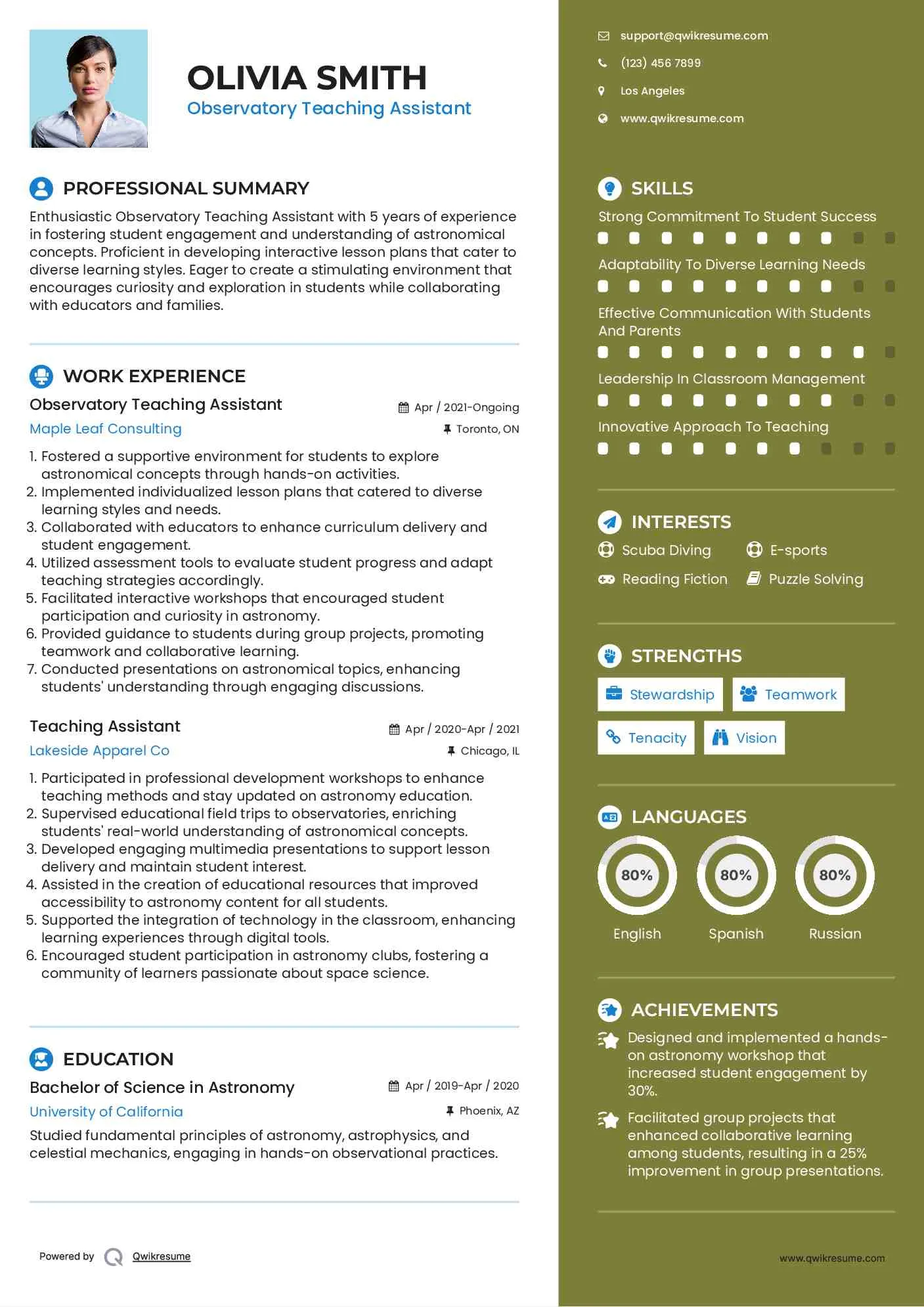
Start your cover letter with a professional salutation. If you know the hiring manager’s name, address them directly (e.g., ‘Dear Mr. Smith’). If you’re unsure of the name, use a general greeting like ‘Dear Hiring Manager’ or ‘Dear [Department Name] Hiring Committee’. Avoid overly casual greetings. Address the recipient professionally to make a good impression. Double-check the spelling and accuracy of the name and title. Personalizing the salutation shows you’ve done your research and that you’re attentive to detail.
First Paragraph
In the first paragraph, state the position you’re applying for and where you saw the job posting. Show your enthusiasm. For example, ‘I am writing to express my interest in the Teaching Assistant position advertised on [Platform].’ Briefly mention why you’re interested in the role or the institution. Focus on creating a strong first impression that will encourage the reader to continue reading. Keep the first paragraph concise and to the point. Include a brief, compelling statement about your key qualifications. This sets the stage for the remainder of your letter.
Second Paragraph
In the second paragraph, provide a brief overview of your relevant skills and experience. Mention the most important qualifications that match the job requirements. Focus on what makes you the ideal candidate. Use action verbs to highlight your accomplishments, e.g., ‘Managed classroom activities’ or ‘Provided individual tutoring sessions.’ Aim to make a strong connection between your skills and the specific needs of the role. Show that you have the skills that the employer is looking for, and use details to back it up. The goal here is to pique the reader’s interest.
Third Paragraph
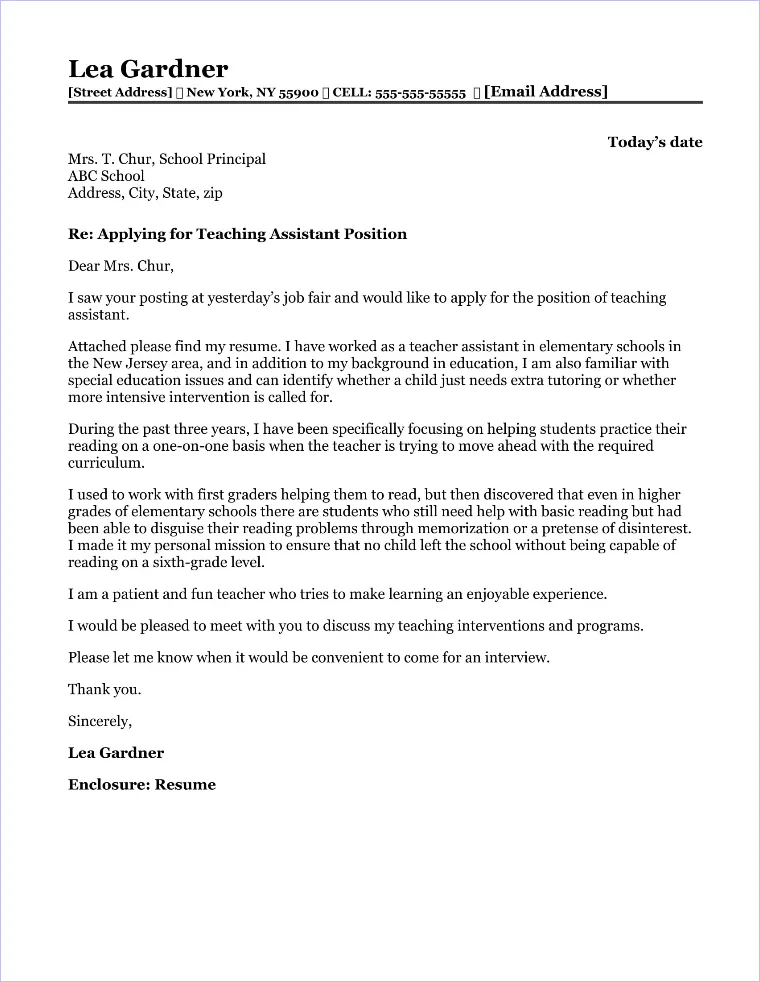
The third paragraph allows you to expand on your qualifications and achievements. Use specific examples to demonstrate your impact. Provide quantifiable results whenever possible. For instance, ‘Increased student comprehension scores by 20% through implementing [specific teaching method].’ Show how your skills align with the institution’s values. Address the specific job requirements and highlight how your background aligns with the position. Tailor your content to the specific needs of the institution and role to leave a lasting impact. This paragraph allows you to shine and showcase your ability.
Closing Paragraph
In the closing paragraph, reiterate your interest in the position. Thank the hiring manager for their time and consideration. Express your eagerness for an interview. Include a clear call to action. Provide your contact information. Use a professional sign-off, and maintain a positive tone. Keep the closing paragraph concise and focused. Make sure to leave a lasting impression. This indicates you are enthusiastic and eager to discuss your qualifications further.
Sign-off
Use a professional sign-off, such as ‘Sincerely,’ or ‘Best regards,’ followed by your full name. Avoid overly casual closing statements. This final touch maintains a professional tone and gives a polished look. Ensure that your sign-off complements the overall style of your cover letter. Proofread your sign-off and your name for accuracy. A good sign-off gives a sense of closure and is courteous to the reader.
Tips for Writing a Great Cover Letter
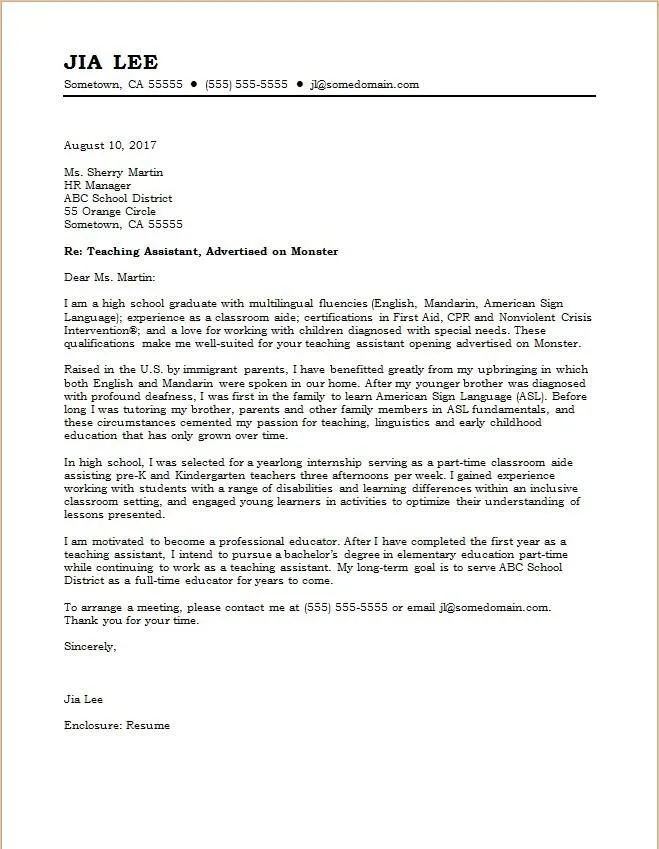
Researching the Institution
Before writing your cover letter, thoroughly research the institution and the department you’re applying to. Understand their mission, values, and goals. Tailor your cover letter to align with the institution’s culture and initiatives. Demonstrate your familiarity with their academic programs or research areas. This shows that you’re genuinely interested in joining their team. Visit the institution’s website, read faculty profiles, and review any relevant publications. This will help you to create a cover letter that is thoughtful and detailed, and that highlights your ability to add to the school. This demonstrates that you’ve done your homework.
Tailoring the Letter
Customize each cover letter for the specific job you’re applying for. Do not use a generic template. Carefully review the job description and highlight the skills and experiences most relevant to the role. Use the job description as a guide and adjust your content to match their needs. Show that you’ve carefully considered the role and the requirements. Avoid using a one-size-fits-all approach. Tailoring shows that you are attentive to detail and that you are seriously pursuing the opportunity. This demonstrates that you are a perfect match for the role.
Proofreading and Editing
Proofread your cover letter carefully for any grammatical errors, typos, or formatting issues. Use a grammar checker and ask a friend or mentor to review your letter. Ensure the tone is professional and the language is clear and concise. A polished cover letter reflects your attention to detail and commitment to quality. Errors can detract from your qualifications. Ensure your letter flows logically and is easy to read. Proofreading is a crucial step in the application process, and it could be a make or break moment for getting that interview.
Common Mistakes to Avoid
Avoid common mistakes that can damage your application. Do not use generic templates, as these often lack the tailored details that hiring managers look for. Do not include irrelevant information that is not directly related to the job requirements. Avoid typos and grammatical errors. Do not exceed the recommended length of one page. Avoid negative language or complaining about previous experiences. Make sure your cover letter highlights your value proposition. By avoiding these pitfalls, you increase your chances of making a positive first impression.
Formatting and Design
Use a clean, professional font and clear formatting. The format should be easy to read and visually appealing. Use standard margins and spacing. Use bullet points to present key information. Ensure that your letter is well-organized and that the content is easy to follow. Choose a font that is easy on the eyes. Maintain consistency throughout the document. A well-formatted cover letter shows that you pay attention to detail and that you are capable of producing high-quality work.
